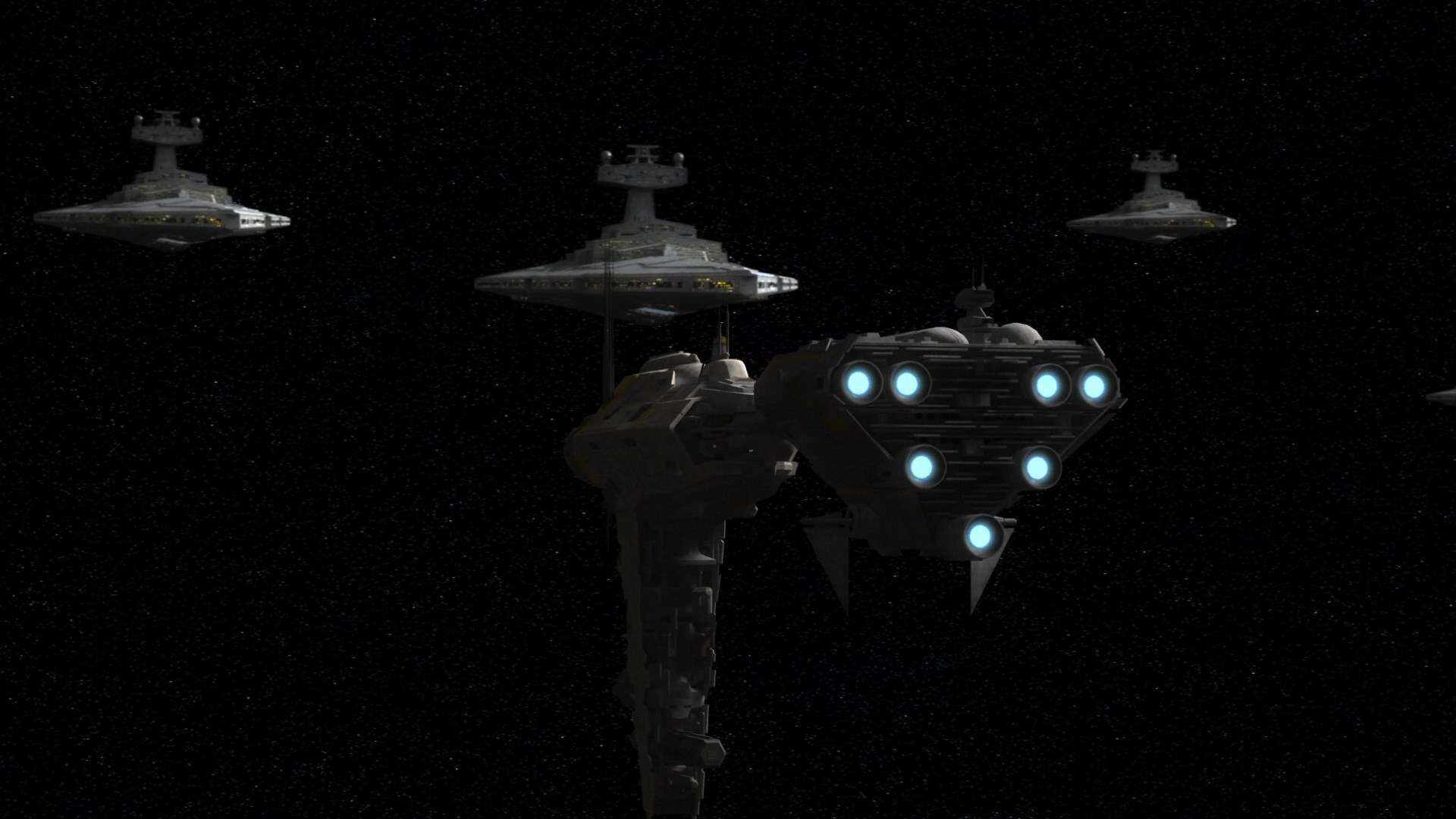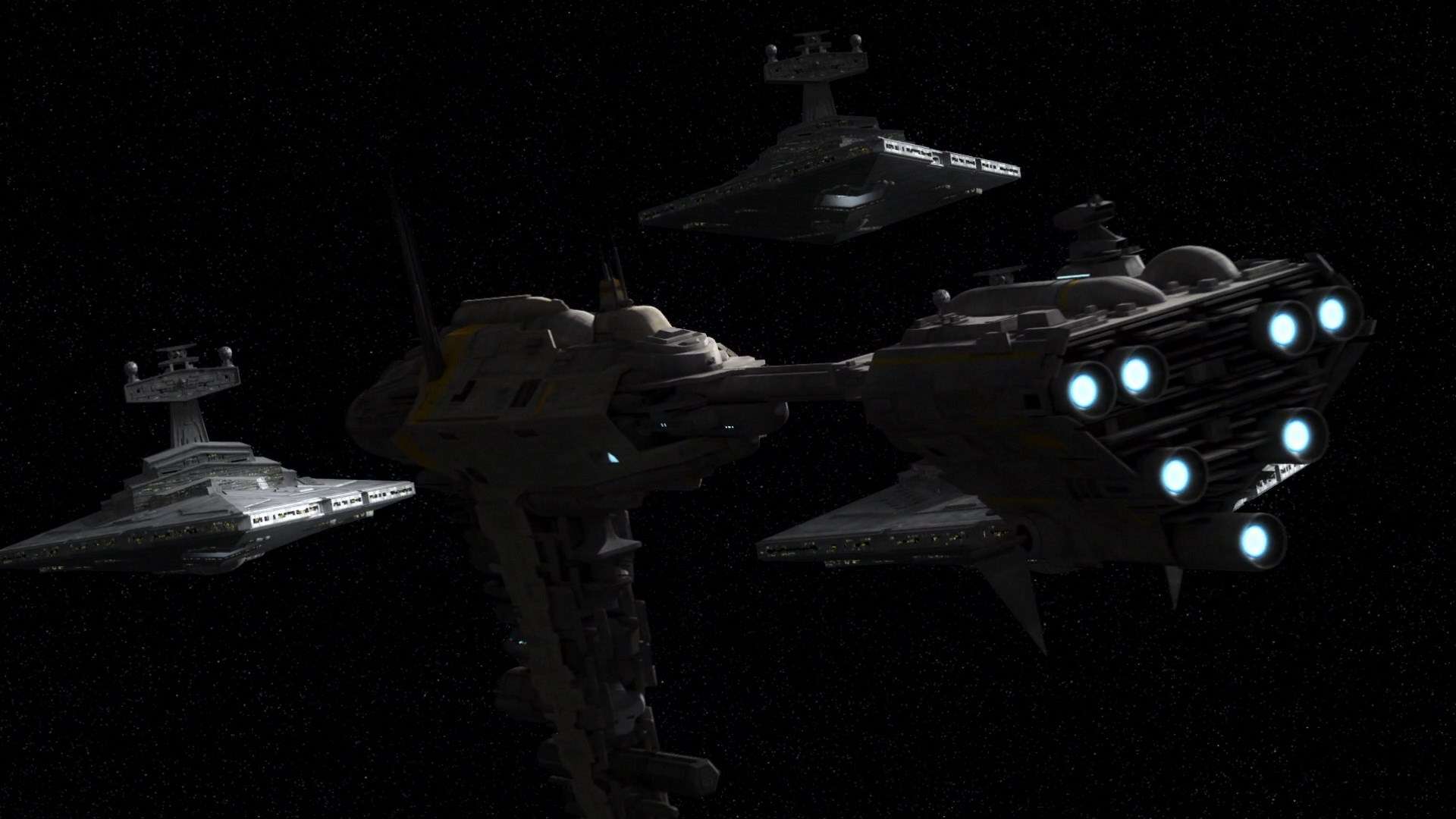The Holdo Manoeuvre, otherwise known as Hyperdrive or Hyperspace Ramming, has gotten a lot of attention among the fan community (or at least certain portions of it), leading to a lot of complaints that it has broken Star Wars. The mere fact that it was possible implies that space combat in SW should not work the way it currently does. The dominant weapon should be starfighter-sized hyperdrive ramships; cheap, expendable, and so destructive that a handful should be capable of destroying large warships or devastating planets. The mere fact that it has shown to have happened, yet has rarely been mentioned before, has caused a fair bit of upset in itself.
To explain why I think this has not happened very often in Star Wars, and why this is not the game-changer it appears to be, I would like to start by teasing out some of the particulars.
To begin, the term 'Hyperdrive Ram' can refer to three particular operations; to ram a target by jumping into hyperspace while aimed at it (aka the Holdo Manoeuvre); to drop out of hyperspace close to a target then ramming it at sublight speeds; and to ram something while still in hyperspace. To the best of my knowledge, the third has never actually happened, while the other two have both been vaguely mentioned in various materials.
The second option, dropping out of hyperspace and then ramming, should be perfectly possible, and has had the occasional mention. One noteworthy mention is in James Luceno's Tarkin, when the titular character muses on the possibility;
When considered in the context of the Holdo Manoeuvre, this method has two particular weaknesses. For one, it appears to be difficult, if not impossible, to bring a ship out of hyperspace with the required level of precision. Dropping out right next to a planet is comparatively easy, but doing so next to a warship is another matter. This also explains why we don't see ships using hyperspace to bypass planetary shields more often; it's just too difficult.If the destruction of the base was the goal, why hadn't whoever was behind the attack used the ship as a bomb by reverting from hyperspace in closer proximity to the moon? Planetary bodies larger than Sentinel had been shaken to their core by such events.
James Luceno, Tarkin, p. 25
Also, a ship coming out of hyperspace does not move at anything like the speed of light. If it did, then Han would never have been able to pull out of his death-dive in TFA; he would have slammed into Starkiller Base in a fraction of a second.
Coming around to the first option - the infamous Holdo Manoeuvre. The manoeuvre seems to work by aiming the ship at the target, then activating the hyperdrive at such a point that the ship accelerates to lightspeed and rams the target just before actually entering hyperspace; thus striking for maximum damage. Based on the visual effects seen in the movie, this is the normal process by which a ship enters hyperspace, and not some new permutation of the technology.
The obvious counter would be gravity-well generators, as used by the Interdictor cruiser/star destroyer. But the Rebels episode 'Zero Hour' would seem to counter this. In the episode, a rebel escort frigate is seen jumping into hyperspace, only to be unceremoniously dumped back out again by the gravity well created by Thrawn's interdictors. The problem in this case is that the frigate clearly enters hyperspace, whereas the Raddus did not. Since the gravity well did not appear to interfere in the translation process, it can be argued that gravity does not prevent the Holdo Manoeuvre; whether artificial gravity wells or those of planets.
But the real weakness of the Holdo Manoeuvre lies in its range. In the movie, Hux can be seen examining a tactical hologram, in which the Raddus is shown to be just outside the effective range of the Supremacy's heavy guns. Most importantly, we see that said range is about the same as Supremacy's width, or about sixty kilometres, with the Raddus just outside that. On that basis, we can see that the distance the Raddus travelled as it translated into hyperspace was a little over sixty kilometres.
In other words, the Holdo Manoeuvre is vulnerable to the same counter as any other ramming attack; the simple expedient of destroying or disabling the attacking vessel before it can make the hyperjump. Even if this cannot be done with warship-grade weapons, it should still be quite possible with starfighters; as Edrison Peavey muses in the novelization;
The only question that remains is why Snoke didn't just finish the Raddus off while he had the chance. The only answer I can think of besides him being incredibly lazy (or bad writing) is that he wanted the Raddus (or Leia specifically) as a lure for Rey and/or Luke.Peavey looked out through the viewports, hands behind his back. The surviving Resistance ships remained just out of range of the First Order guns. If there had been any chance that those fleeing ships would be reinforced, Peavey would have recommended trying to cripple them with waves of starfighter attacks, but all the First Order's intel indicated no support was coming.
That meant there was no reason to send pilots into danger - not with the Resistance fleet unable to flee and beyond help.
Jason Fry, The Last Jedi, Expanded Edition, p. 257-258
I hope this analysis proves worthy.



